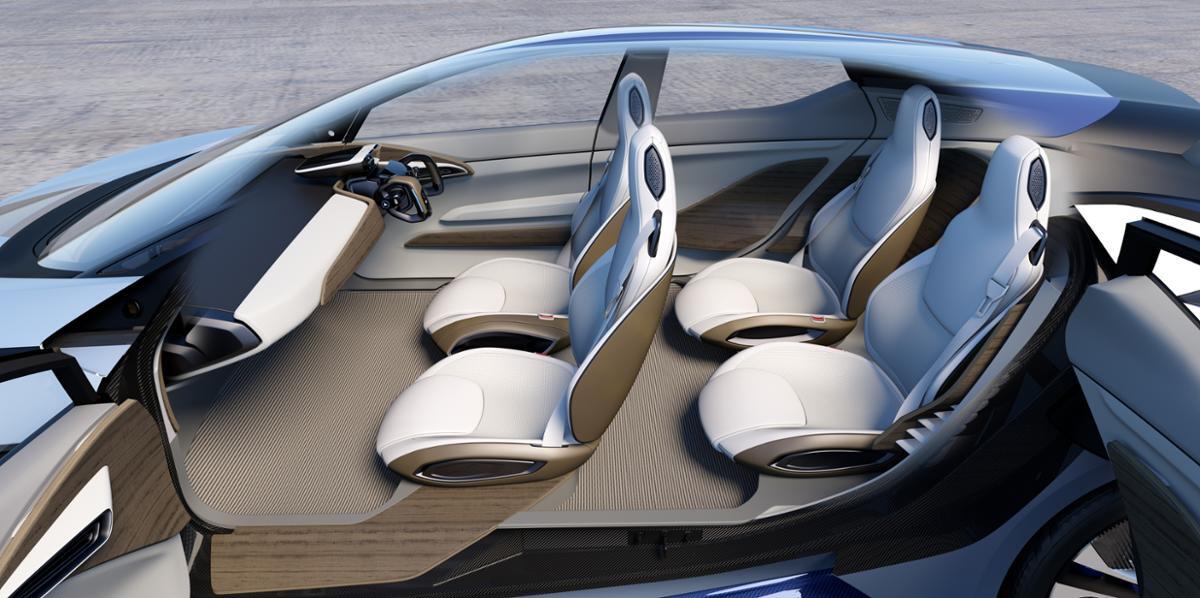Unveiled as a showcase of Nissan’s plans for the future of electric vehicles and autonomous driving, the IDS Concept was presented at the Tokyo Motor Show today by Nissan’s president and CEO Carlos Ghosn. Ghosn said that the company is well on track to fulfill its promise of autonomous drive technologies in production vehicles by 2020.
The Nissan IDS Concept is meant to convey a future of autonomous driving that’s not just cars as conveyor belts to take people from Point A to Point B, says Nissan. Instead, the car imitates the driver’s style behind the wheel and gives over control of the car to the driver in Manual Drive whenever requested. At all times, safety sensors and technologies monitor conditions and offer assistance, giving aid during emergency maneuvering. The vision is that of an intelligent vehicle that works as an “attentive partner” in the driving process, going beyond just plying the roads and watching traffic.
Nissan sees the car as an extension of the rest of our lives, in the same way smartphones and other gadgets have become. As such it will integrate with scheduling, personal interests, and more to seamlessly work with our lives as a valuable aid rather than just a separate tool.
"A key point behind the Nissan IDS Concept is communication," says Mitsunori Morita, Design Director. "For autonomous drive to become reality, as a society we have to consider not only communication between car and driver but also between cars and people."

Interior and driving modes
To illustrate this, the IDS Concept’s interior has various configurations, some of which are available only when the car is driving itself autonomously (called "Piloted Drive"). When in Piloted Drive, for example, the steering column recedes into the instrument panel to be replaced by a large flat screen. The screen is the interface to the car’s artificial intelligence (AI), which responds to voice and gesture commands. Seating, meanwhile, rotates inward to create a more communal, conversational atmosphere.
That steering wheel is not your usual round wheel as found in today’s vehicles. Instead, it is a twin-handled yoke not unlike a horse’s reigns. Vehicle information is displayed on a heads-up display ahead of the driver. Interior ambient lighting changes to indicate Manual Mode. Control can be swapped between Piloted and Manual modes through physical actions only the driver can complete, optimizing safety.
"In every situation, it is about giving the driver more choices and greater control. And the driver will remain the focus of our technology development efforts," Ghosn said at the show.
The goal of these technologies, and others, are to reduce traffic accidents through smarter use of AI and on-road sensors. When vehicles can speak with one another as well as humans, they will be better able to avoid accidents and the situations that can cause them, Nissan believes.

Drivetrain and exterior
The Nissan IDS Concept is also a showcase of the company’s focus on zero-emissions vehicles and efficiency dynamics. Currently, Nissan is the world’s most prolific maker of production electric cars, with nearly 200,000 of them on the road globally. The Nissan LEAF is the best-selling battery electric, highway-capable car of all time. Building on that, Nissan is working towards improved range without compromising capability or cost-effectiveness.
The IDS Concept houses a 60 kWh battery and utilizes advanced use of carbon fiber and aerodynamics to achieve a range similar to most gasoline cars. Although Nissan did not specify the conceptual range of the IDS, it can be inferred that the expectation would be near 300 miles per charge – the average range of most gasoline-powered cars.
Nissan Executive Vice President Hideyuki Sakamoto said that technologies being pursued for advanced electrification include improved motors, batteries, and inverters to augment improvements in aerodynamics and charging.
The body of the IDS Concept is made entirely of carbon fiber and aims for a low coefficient of drag to heighten aerodynamics. Details such as large diameter wheels, thin-walled tires, and the use of vortexes to smooth airflow are found throughout the design.
Nissan says that, ultimately, the goal is to make "two zeroes" a reality – zero emissions and zero traffic fatalities.Source: Nissan


















